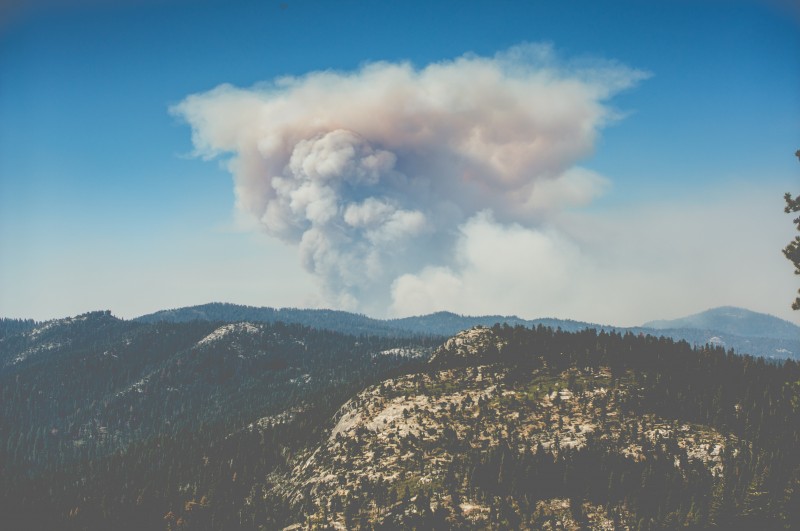Rhythm, Breath and Climate Change
19 November 2019
Last year, I went through a major rethink about my approach to the Rhythm for Reading blog. To ‘incubate’ the new outlook I’ve spent a great deal of time exploring new themes and scoping out a broader awareness of rhythm in everyday life.
Deadly wildfires
The shift started unexpectedly twelve months ago. I happened to be working in the San Francisco Bay Area in November, as the State of California braced for the driest month of the year, which typically generates a high fire risk. You may remember the wildfires that blazed out of control at that time. More than 80 people tragically lost their lives in the deadly ‘Camp Fire’ that completely destroyed the town of Paradise. For eight days, the Bay Area lay under a thick blanket of smoke. From my hotel window and when travelling to work I could see that the condors had stopped riding the thermals high in the sky. There was hardly any sunlight, and the air quickly became the filthiest on the planet. Nature seemingly had shutdown, but we humans had stayed calm and carried on regardless. The freeways were absolutely crammed with vehicles, pumping fumes into the already saturated air.
Inequality
Although I was lucky enough to be staying in air-conditioned accommodation during the worst days of pollution, I worked with people who were not so fortunate. They told me about the dreadful effects of the smoke on their young children and elderly neighbours. Given that an hour of exposure to the Camp Fire smog was judged to be the equivalent of chain-smoking ten cigarettes, it was unsurprising that poorer people in the Bay Area, those without air-conditioning living some four hundred miles from the wildfires, were struggling with their breathing, feeling nauseous and even collapsing. This situation made me realise the extent to which I have taken clean air for granted. I have always gratefully acknowledged the work done by trees to reduce carbon dioxide during the night, but naively, I have assumed that this natural recycling process was sustainable. Following the Camp Fire, I no longer presume that forests will continue to maintain the fragile balance of gases that sustain life on our planet.
Toxic air
In California last year, deadly particulate matter from the burning of the forest caused the toxicity in the air. In other words, we were inhaling carbon particles from the very trees that we need in the long term to recycle the air. In the same twelve month period, it has been heart-breaking to see fires started deliberately, that have caused enormous devastation in the Amazon Forest, the ‘Lungs of the Earth’, and tragically, huge areas of New South Wales, Australia are ablaze as I write this.
Rhythm
Like me, you may have been shaken recently into a new awareness of our responsibility for Earth’s atmosphere. Is this the beginning of the end? Historically, seasonal rhythms have driven the cyclical flooding of rivers, as seen in the beautiful hieroglyphs of Ancient Egypt. The predictability of dry seasons and rainy seasons has supported the cultivation of food crops for twelve thousand years. Going back even deeper into pre-history, when an alternating rhythm of warmer and cooler periods caused the ice-sheets of North America and Scandinavia to advance and retreat, hunter-gatherer peoples became highly adaptive and innovative.
According to anthropologist Professor Brian Fagan, Cro-Magnon humans, Neanderthals and many of the larger mammals proved to be temperature tolerant, demonstrating ample capacity to adapt during climactic shifts of the rhythmic, ‘Dansgaard-Oeschger (D/O) oscillation’ (Fagan, 2010, p.55). There was also a remarkable explosion of creativity that followed warmer periods of climate change, marked by magnificent art in the caves of South Africa, Spain, Germany, Austria and France.
Breath
Unlike the hunter-gatherers, who breathed pristine unpolluted air in conditions that were on average considerably cooler than those of today, we inhabit a rapidly warming planet, in which unprotected forests as well as coral reefs are lost every year. The situation that we face is pushing us towards the upper limit of our temperature tolerance. Unfortunately, industrial technologies and economic models have encouraged a false perception of our independence of nature, which has led to widespread abuse of the natural world.
Earth’s indigenous peoples on the other hand, have maintained values and technologies that are closely aligned with nature (Fagan, 2011). Living and breathing in harmony with nature, they have maintained sustainable cultural traditions, that offer a balance between ideals of freedom and security. Now, we must all work together to restore rhythm and balance, to protect and nurture higher values of respect and appreciation for Earth’s resources.
References
Fagan, B. (2010) Cro-Magnon: How the ice-age gave birth to the first modern humans, Bloomsbury Press.
Fagan, B. (2011) The First North Americans: An archeological journey, Thames and Hudson
Tags:
Do you have any feedback on this blog post? Email or tweet us.
